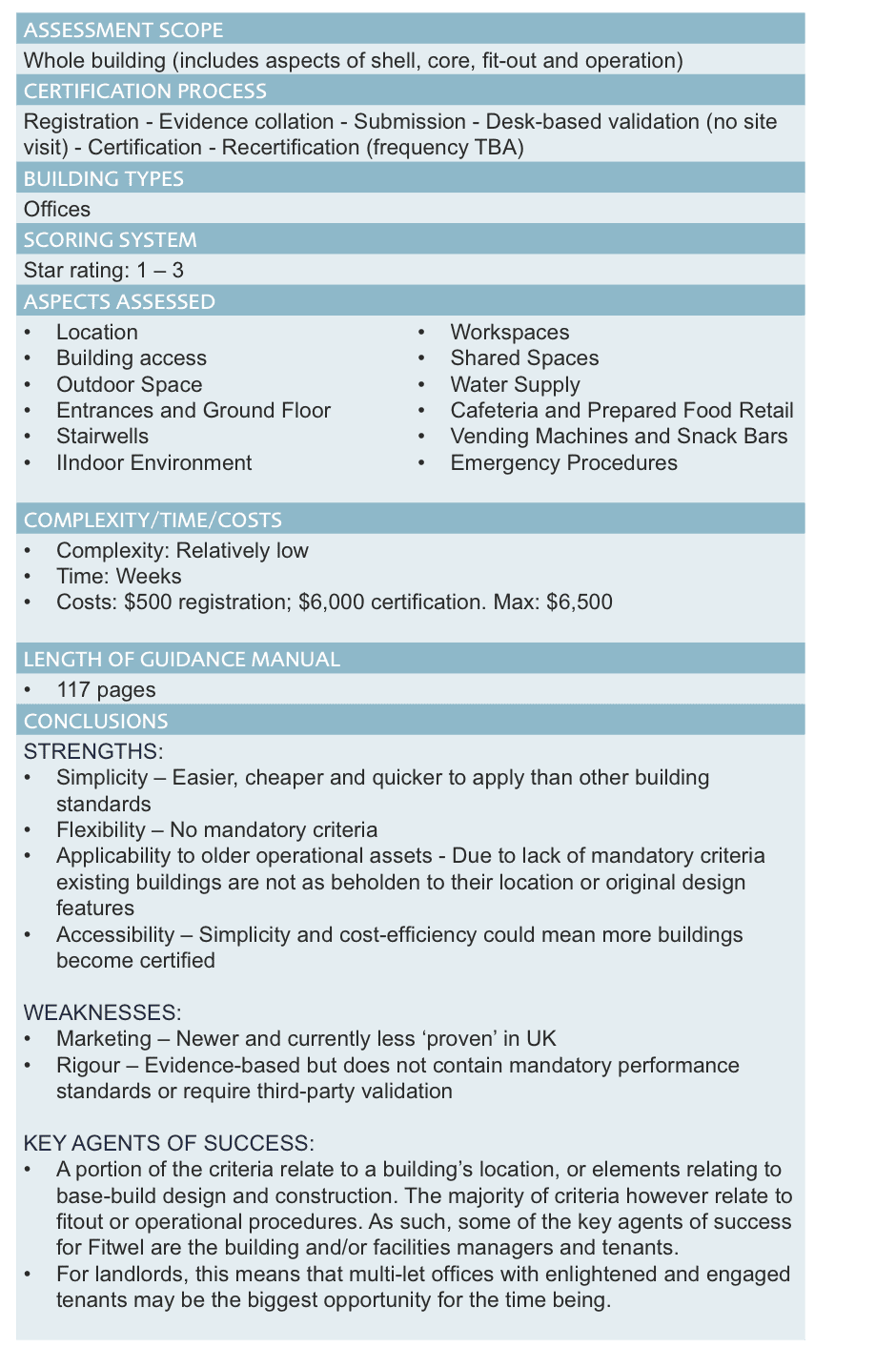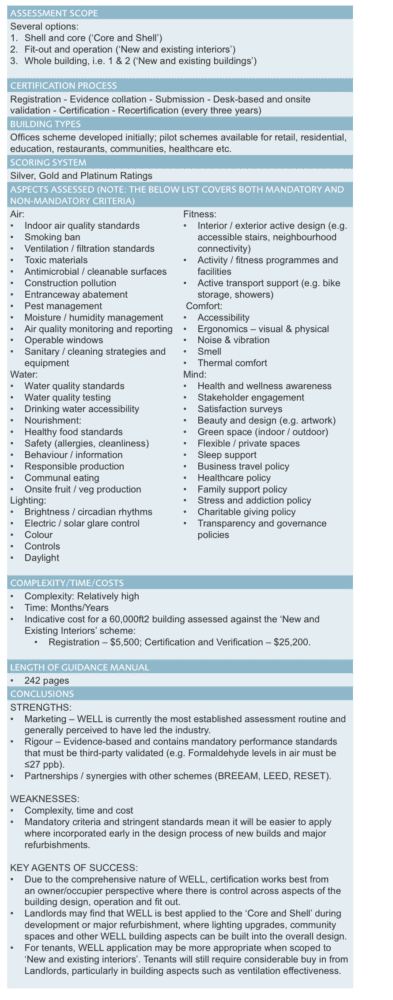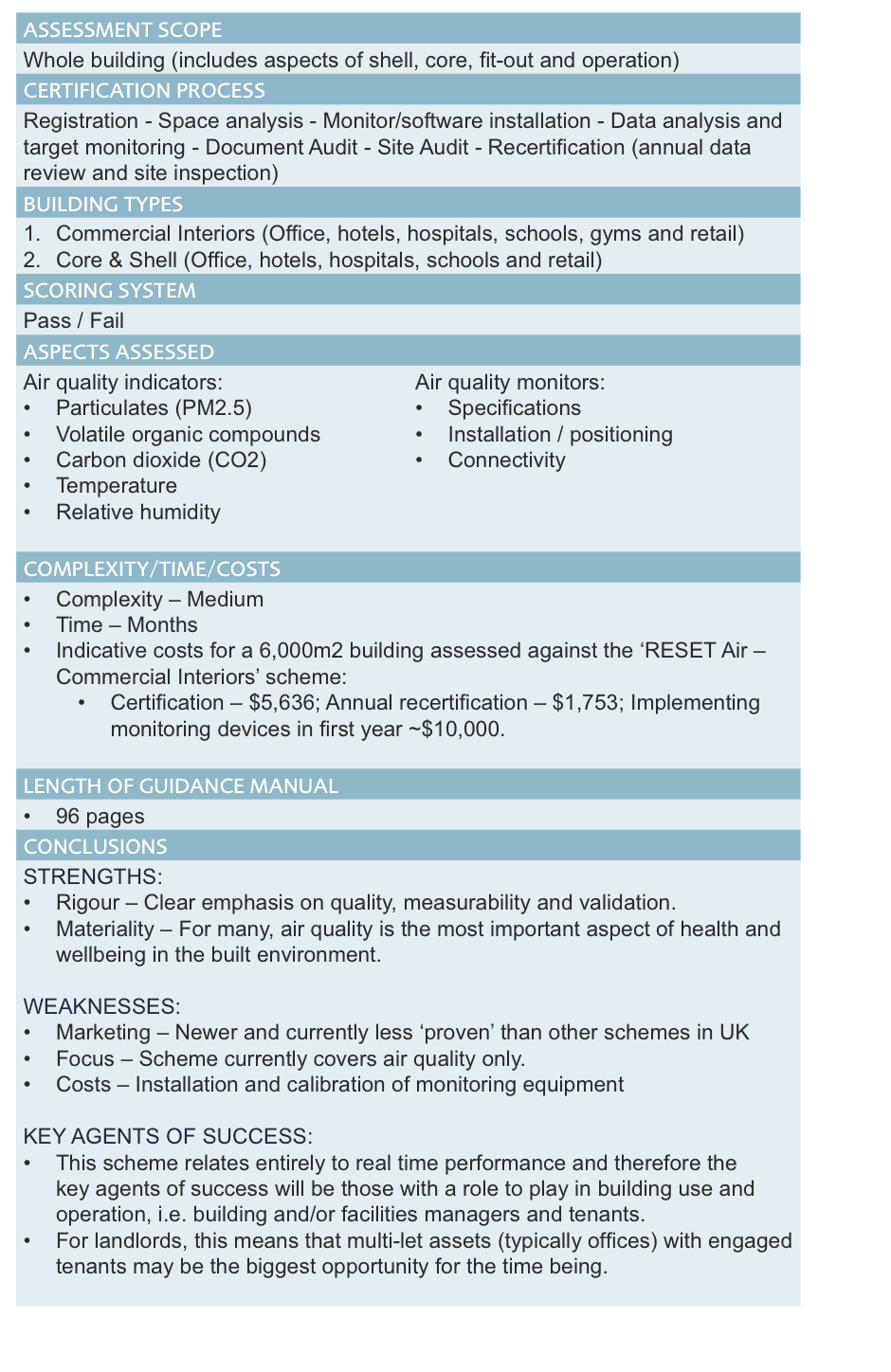SHARE
Thoughts
This post was co-authored by Oli Pye, Associate Director and Rhianne Menzies, Junior Sustainability Consultant
Momentum behind the topic of health and wellbeing in commercial real estate is building […no pun intended…] and we at EVORA are committed to expanding our expertise in this area significantly. We firmly believe that the health and wellbeing of building occupants is now a critical element of the wider sustainability agenda. Here we set out a post about Health and Wellbeing Certification Standards.
In support of this, we recently held our own wellbeing event in partnership with BRE as we were keen to bring operational assets into a discussion that has so far tended to focus on the new builds and major refurbishments.
Furthermore, and looking closer to home, we recently assessed the positive improvements to our own wellbeing in our office move earlier this year and published the results on our website for all to see.
As has been evidenced by the vast amounts of discussion around the WELL Building Standard, certification schemes have played and will continue to play a vital role in the evolution of the conversation around health and wellbeing. They not only provide standardised, third party-validated assessments that support performance benchmarking, but they are also used widely as key pieces of reference material for the industry.
So, which scheme(s) can be used to assess what type of building, at what cost, and to what level of rigour? And which scheme(s) should be consulted when developing an internal strategy to progress health and wellbeing?
Three key standards – Fitwel, WELL and Reset
As the number of certification schemes has recently begun to proliferate in earnest, we thought now would be an appropriate time to provide a brief introduction to the three front runners: WELL, Fitwel and RESET.
This blog forms the first in a series of health and wellbeing-related communications. Following this ‘introduction’ to the three dominant certification schemes, we will return to each scheme one by one and in greater detail. The next blog will take a detailed look at Fitwell, then we’ll tackle WELL and RESET.
(It is worth noting that established green building certification schemes such as BREEAM and LEED also cover aspects of health and wellbeing within their assessments. These schemes are not covered in this blog.)
Fitwel – Simpler, holistic, office-focussed, no mandatory credits, no onsite validation
Fitwel is a process for assessing the level to which a building supports the overall health and wellbeing of its users. It looks and feels like a normal building rating system – e.g. BREEAM or LEED – with its guidance document, assessment criteria and evidence requirements. Its assessment process is more straightforward, with photos taken on a mobile device providing sufficient evidence for many criteria and an online portal that serves as a one stop shop for guidance materials, pre-assessment, assessment and verification.
In our experience, Fitwel has been ‘on the scene’ in the UK for roughly 12 months. From the beginning, it has been touted across the industry as being easier and more cost-efficient than other schemes. This is undoubtedly true though it remains to be seen whether it’s correspondingly less prescriptive approach is accepted by the industry as being sufficiently robust. As of March 31st 2017, there were three projects in the process of achieving certification in the UK.

WELL Building Standard – Complex, holistic, robust, mandatory credits, onsite validation
Like Fitwel, The WELL Building Standard (‘WELL’) is an assessment routine that takes a holistic look at building-related health and wellbeing – the topics it covers ranges from indoor air quality to sleep. It also has all the hallmarks of a typical building rating system – guidance, criteria and evidence requirements etc. However, just 5 minutes with both manuals in front of you and it becomes very clear that they are quite different in their level of complexity. WELL assessment criteria are more prescriptive and unlike Fitwel they contain many mandatory performance standards that must be third-party validated.
WELL is undoubtedly the preeminent health and wellbeing assessment for buildings. With the first manual released in 2014, it has certainly been around the longest.
Despite its profile and the number of assets registering under the scheme, so far only a relatively small number of assets have seen it through to certification in the UK: 20 registered; 1 certified (as of 16th August 2017).
Costs were taken from the WELL ‘Pricing Calculator’

RESET– Air quality, robust, flexible, onsite validation
RESET (Regenerative, Ecological, Social & Economic Targets) is a modularised certification programme, currently covering just ‘Air’ – i.e. indoor air quality. According to their website, new modules to assess ‘Comfort’ and ‘Environment’ are in development.
RESET Air is a sensor-based certification programme that requires ongoing measurement via real-time monitors and communication of results directly to users. It’s stated aims are to standardise and validate the quality of sensors, their installation and calibration. It also sets standards for overall performance and reporting the results to building occupants. RESET does not prescribe any routes to compliance (i.e. design criteria); instead, it is entirely results-based. There are a number of completed certifications in Asia, although we are not currently aware of any completed certifications in the UK.
Costs were taken from the RESET ‘Pricing Calculator’

Health and Wellbeing Certification Standards – Concluding Remarks
Fitwel – If you want a relatively quick and cost-efficient third-party verified stamp of approval for new or existing assets. Challenges may arise in conveying the relevance of the standard to prospective and existing tenants, however, it should provide an effective framework for discussions.
WELL – A belt and braces design, assessment and certification routine. Likely a higher cost option, when considering certification, consultancy and capital expenditure fees but correspondingly robust and well received across the industry. Certainly, one to consider for ‘lighthouse’ schemes going through construction or major refurbishment. The manual is freely available and so provides a useful reference guide for those wanting to benchmark and or update their strategic approach to health and wellbeing without going for full certification.
RESET – One to watch closely and in the short term. There is a real need for standardisation around sensor calibration and implementation and air quality is arguably the first health and wellbeing aspect that as an industry we need to get right. It is easy to imagine a procedure like this becoming a statutory responsibility in the near future, particularly in public (e.g. schools) and health/social-care related buildings. Forward-thinking corporate occupiers are also likely to be highly interested in this scheme.



